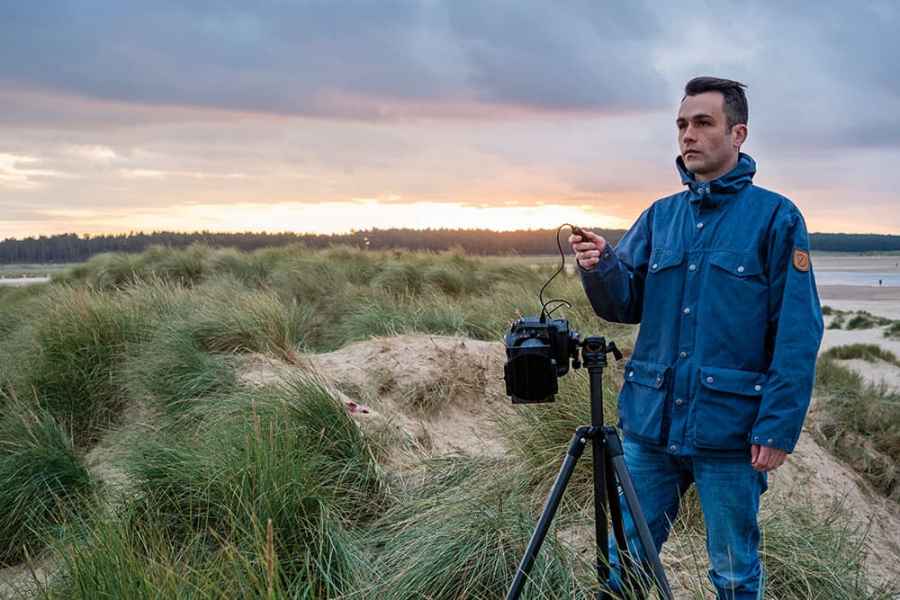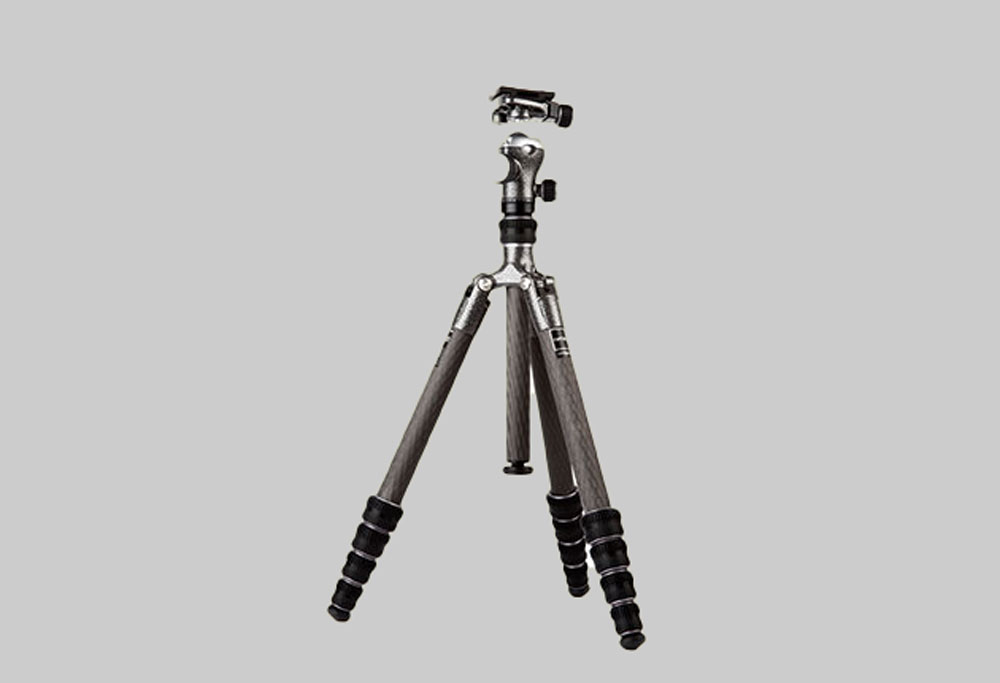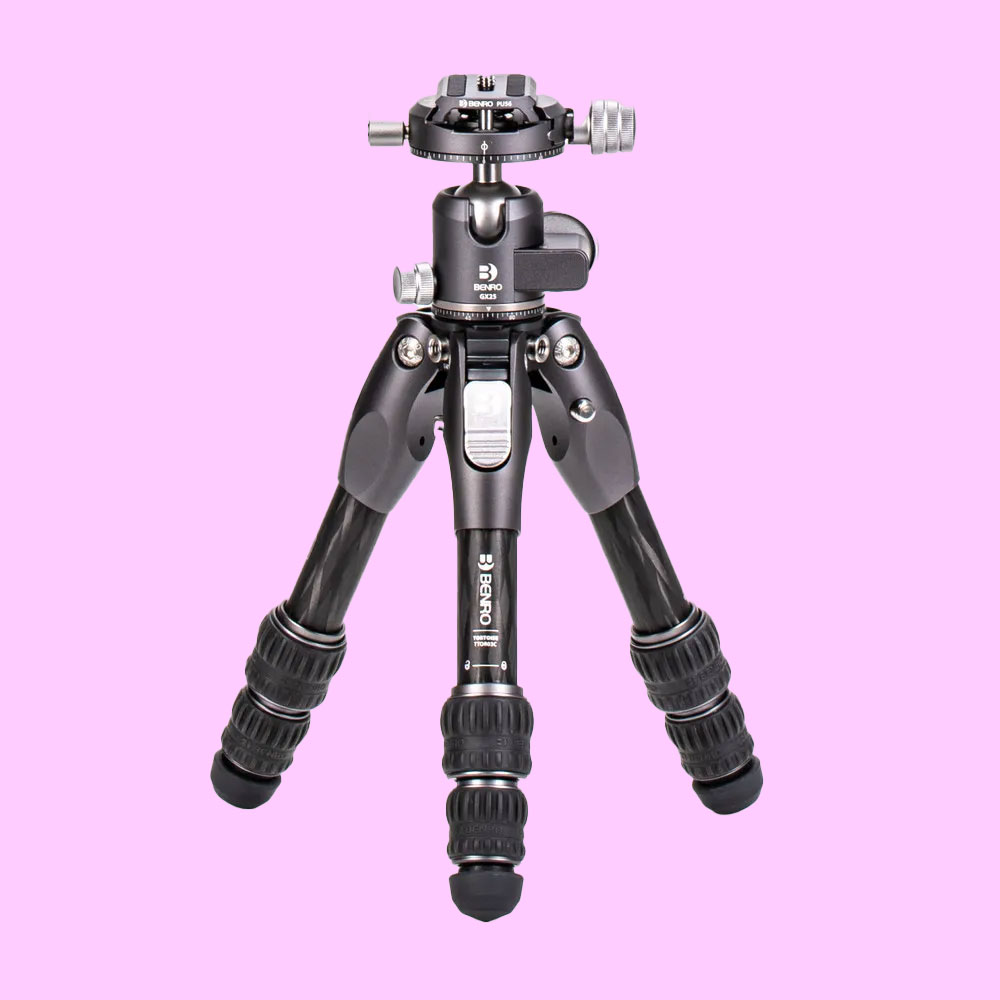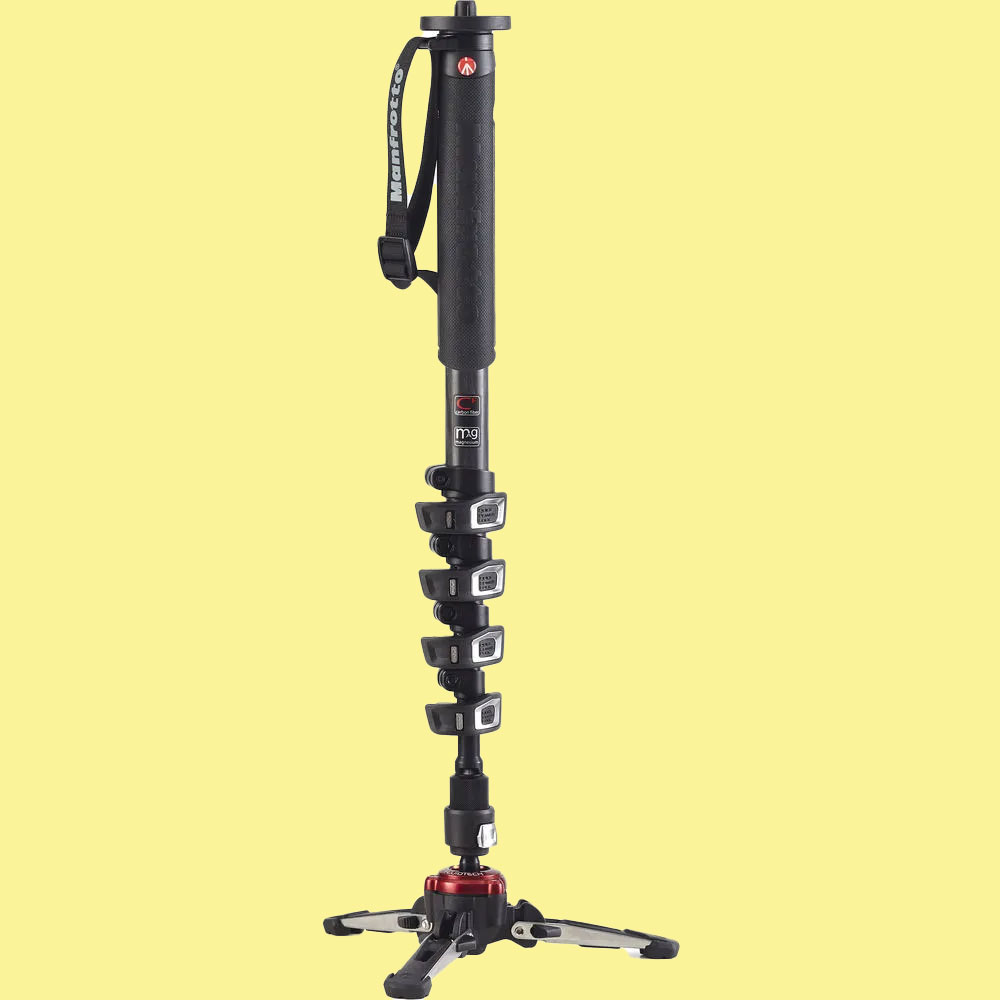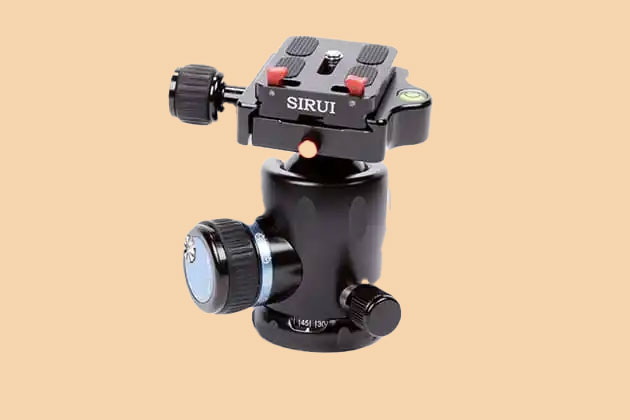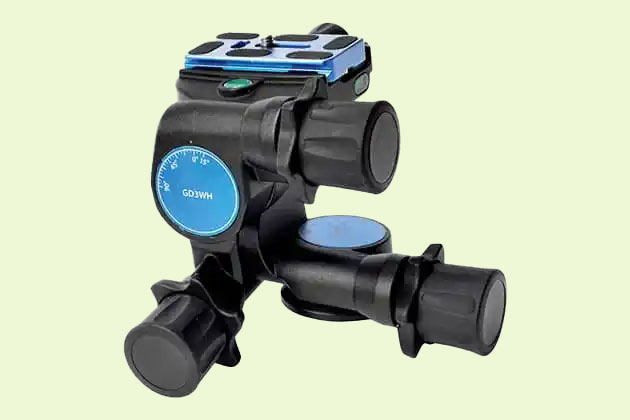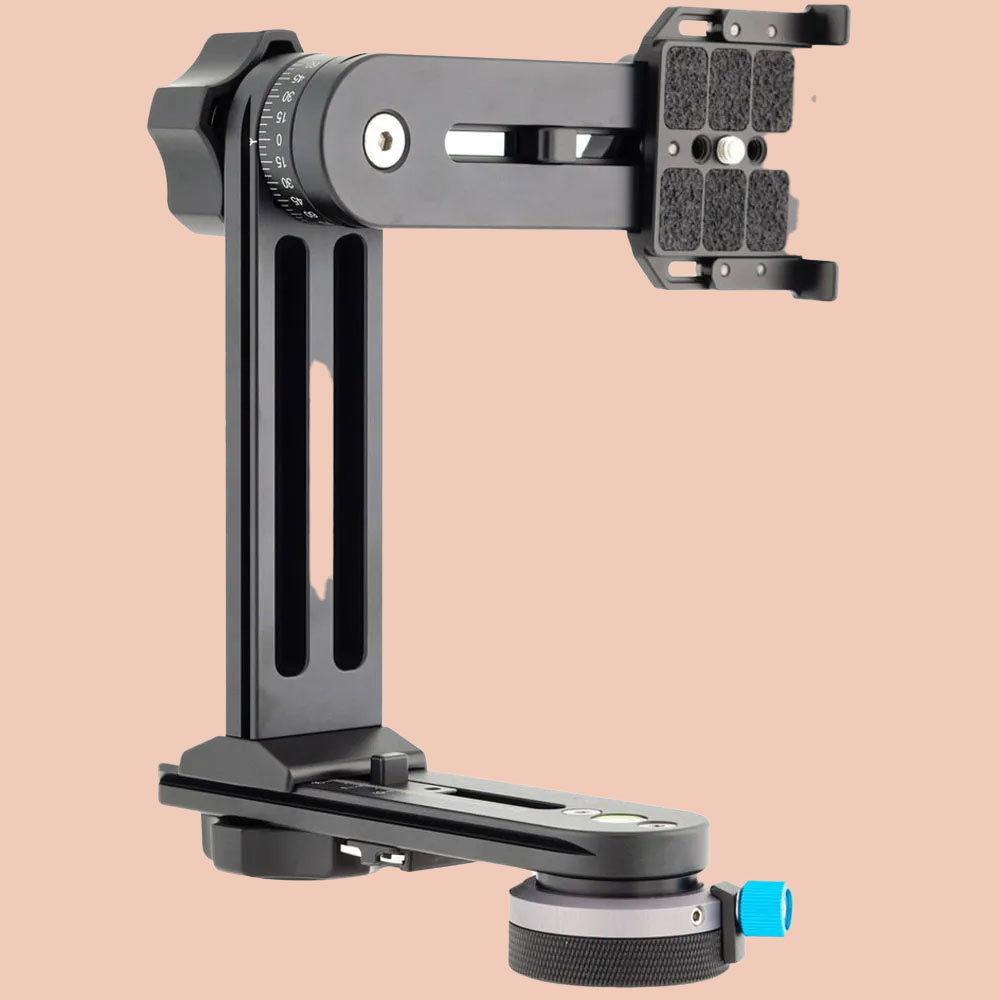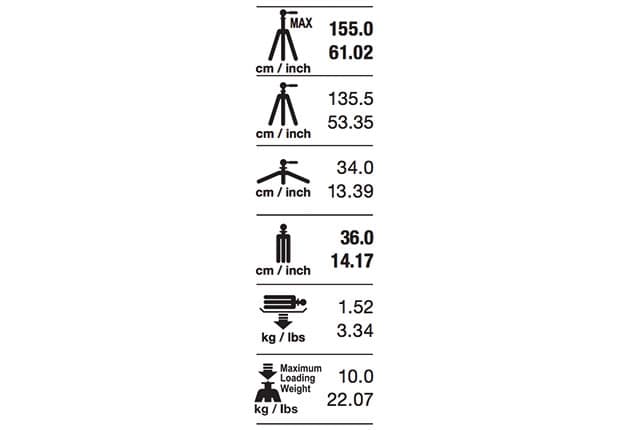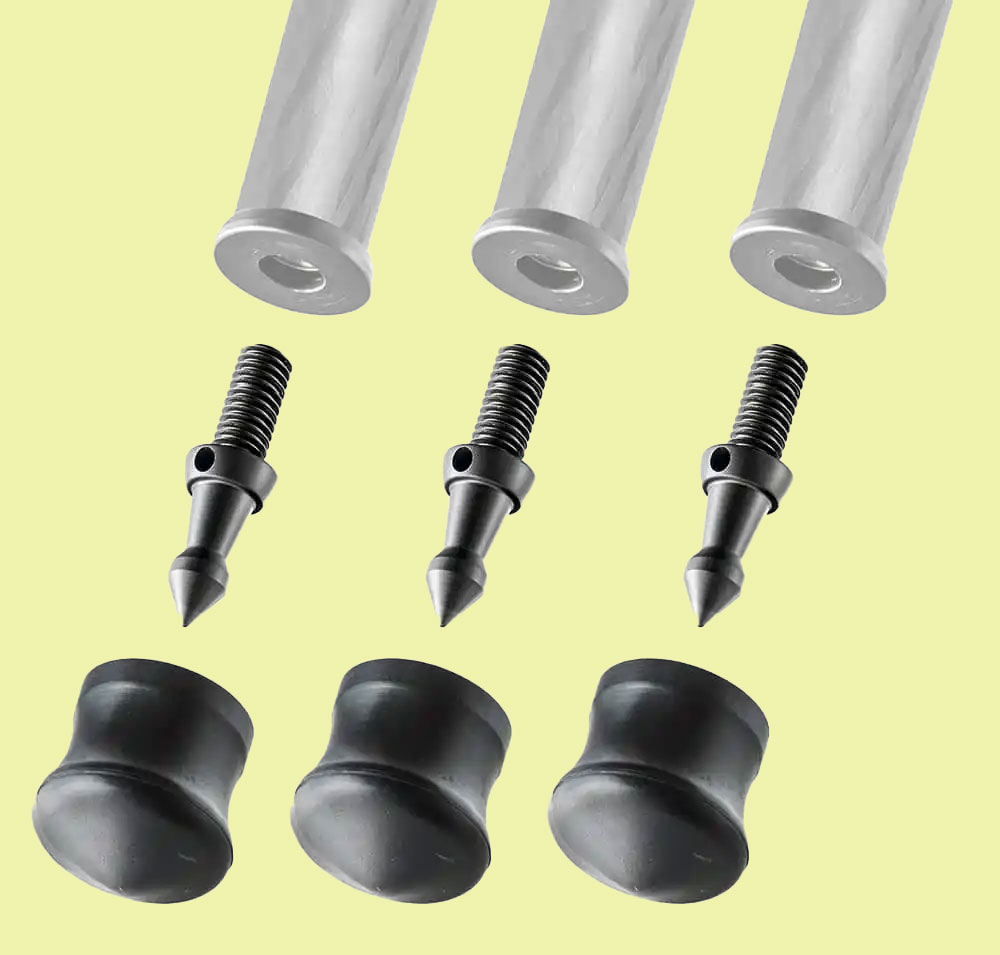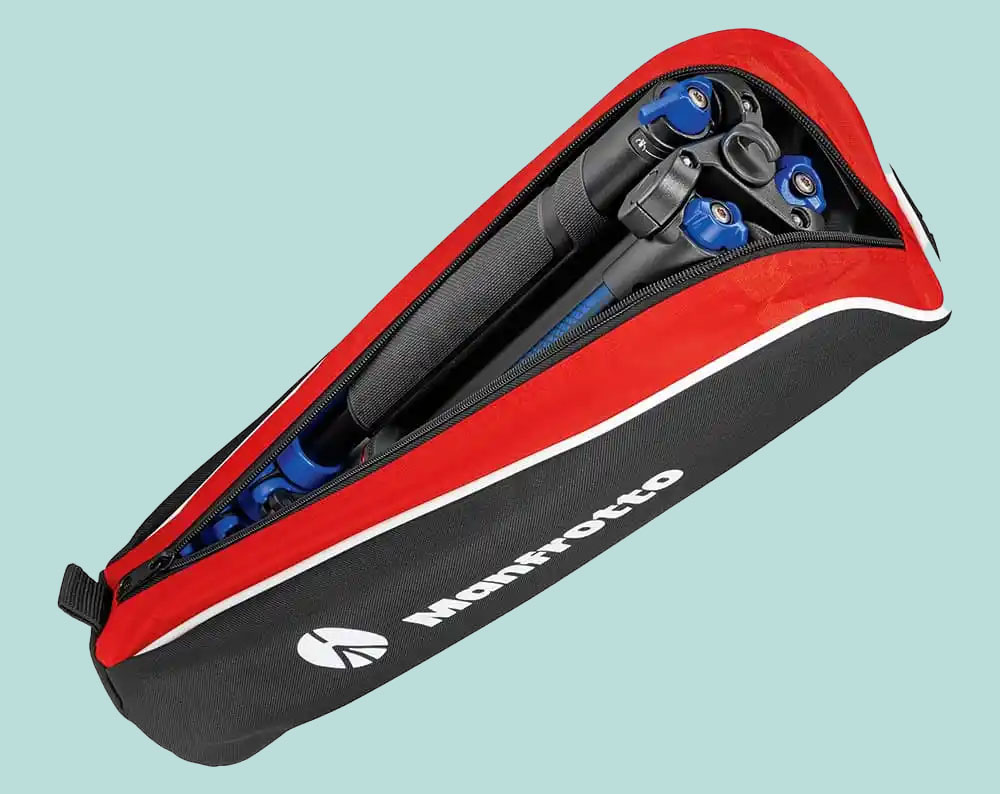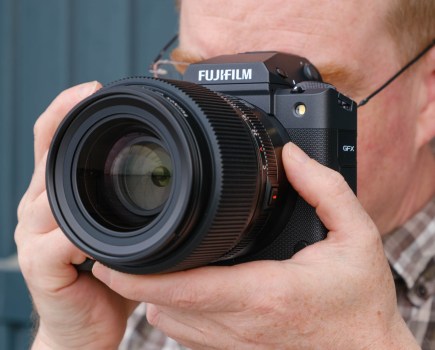Whether looking to expand your creative capacity, or become the subject of self-portraits, a tripod is a vital accessory to photographers. In this ultimate guide, you’ll learn everything you need to know about tripods, with our expert Technical Editor, Andy Westlake.
A tripod is essential for a range of photography types, including low-light, night photography, light painting, long-exposures, macro photography (particularly focus bracketing), and can also elevate your video work to give a much more professional look.
I suspect many photographers sense that they could use a tripod more often – or get round to buying one in the first place. While the remarkable high ISO and image stabilisation capabilities of modern cameras allow handheld shooting in very low light, using a tripod will let you select low ISOs for the best possible image quality, or use long exposures for a creative effect.

How to choose a tripod
Weight – The problem, of course, is that tripods are big, heavy, and awkward to set up – or at least, they used to be. The good news is that, if you’ve an aversion to tripods after lugging around a heavy, chunky metal one, the latest offerings are lighter and more portable than ever.
Carbon fibre vs Aluminium alloy – Technology – not least, materials technology – has advanced greatly in recent years. Carbon fibre has gone from expensive luxury to mainstream material, providing both lighter weight and superior dampening of vibrations. Many models are available in both materials: I’d always recommend carbon fibre if you can afford it. Aluminium legs are cheaper but tend to be heavier.
Leg sections – three, four, or five? Where three-section legs were once considered de rigueur, four- or five-section models are now standard, giving a shorter folded length that’s more convenient to carry, especially when combined with reverse-folding leg designs. Anti-twist leg locks make setting up quicker than ever, while the Arca Swiss dovetail pattern has emerged as the de facto standard for quick-release plates.
Also check the leg angles, particularly if you shoot on uneven ground or in confined spaces where you need to splay one or two legs further than the others. Look for legs that can be angled independently, as they are infinitely preferable for most tasks.
Legs continued – flip locks vs twist locks – Some tripods utilise flip locks while others use twist locks. If speed of set-up is important, look for legs with three sections and twist locks; if portability is essential but speed less so, look for legs with four or five sections and flip locks (tripods with more leg sections tend to have shorter folded lengths).
Other things to consider
What about the centre column? Most tripods feature a centre column that can be extended to raise the height of your camera, or angled and sometimes even inverted to allow for stability at otherwise tricky angles. For macro photographers who often shoot from ground level, this is a very important factor. One technique tip for centre column use: for maximum stability, extend the legs first and only deploy the centre column once you have reached maximum leg extension.
Tripod feet – While smooth rubber feet are best suited to hard surfaces and subjects such as interior architecture and studio still life, spiked metal feet provide more grip if you’re shooting on uneven ground. Some tripod legs feature rubber feet with internal metal spikes that can be ‘revealed’ if necessary.
Does brand and price matter? In a market that was once dominated by Manfrotto and Gitzo, there’s now a wider range of brands to choose from. Newer names such as Benro, 3 Legged Thing, Feisol and Sirui provide innovative products at competitive prices, while longer established brands such as Vanguard and Velbon also have some fine offerings. Naturally, the general rule is that you get what you pay for.
What about the head? As expected with all this competition, there’s a wider range of tripods and heads on the market, but this complicates choosing the best option for your needs, to say the least. Read on for our overview of what’s available, and our recommendations for the best kit on the market.
Top tripods and kits
Tripods come in many different styles and sizes, each with its own specific strengths, here’s our guide to tripods and kits:

Lightweight bargain tripods
Decent tripods don’t have to weigh a ton or cost a fortune, and it’s possible to get lightweight but sturdy tripods for under £100. Compromises include a lower maximum height and recommended load, meaning these tripods are best suited for use with smaller DSLR or mirrorless cameras with tilting screens, and not ideal for shooting with large lenses. Our top pick is the Benro Slim TSL08 Carbon Fibre tripod + N00 ball head kit, which extends to 146cm, packs to 51cm, and weighs just 1kg. At just $140 / £117, it’s an absolute steal.
Another great choice is the Vanguard VEO 3 GO 235AB. This five-section aluminium alloy travel pod folds down to 38cm, while extending to 136cm. Weighing 1.2kg, it can support camera/lens combos weighing up to 4kg. It costs a very reasonable $170 / £150. If this model doesn’t suit, Vanguard has plenty more options of alloy and carbon fibre models to choose from.
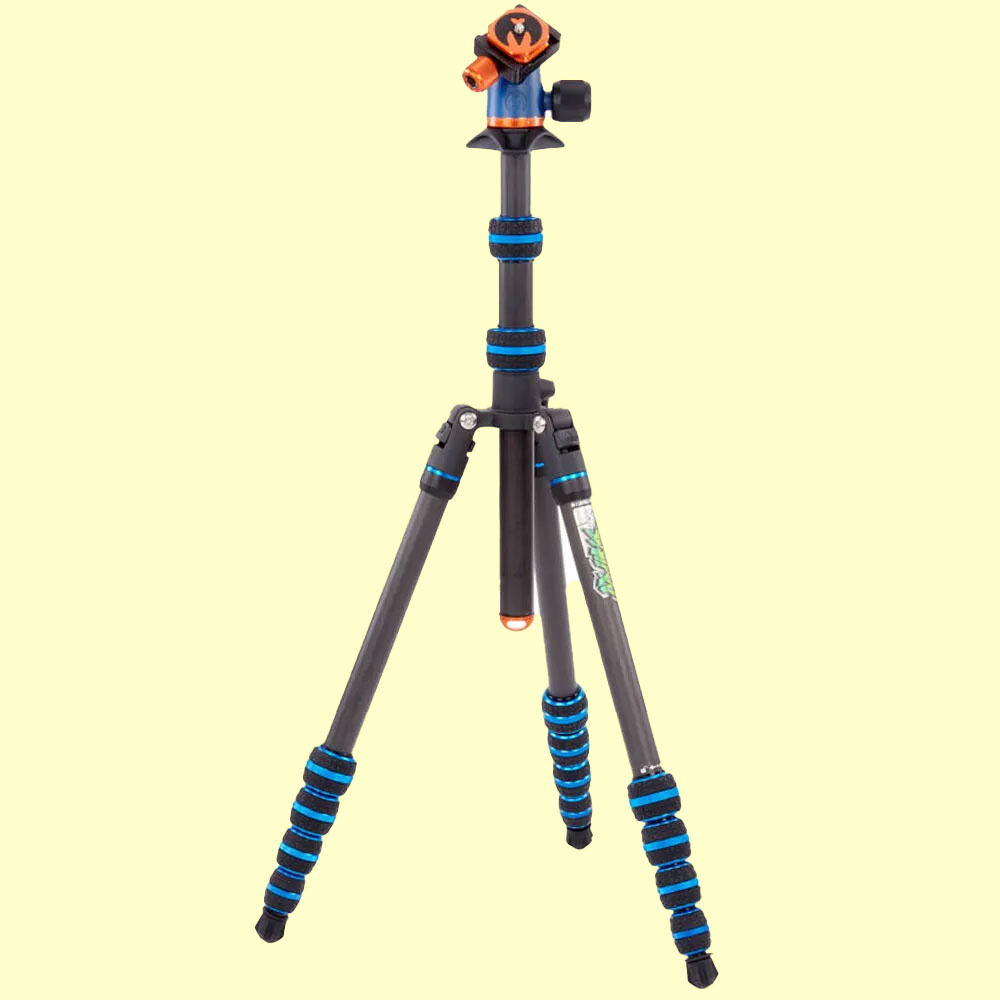
Travel tripods
If you’re jetting off on a city break, or plan on carrying a tripod around all day long, then an ultra-light and compact travel model is desirable. Five-section legs and two-section centre columns allow good-sized tripods to fold down to carry-on friendly dimensions. For an ultra-portable option, the superbly engineered carbon-fibre Benro Bat Zero Series carbon fibre is hard to beat. It comes with the excellent VX20 Arca-type compatible head, folds to 35cm and weighs just 0.83kg, but can extend to 41cm. It’s priced at $250 / £220.
If you need a full-size alternative, take a look at the 3 Legged Thing Punks Brian 2.0 at $270 / £219, which extends to an impressive 1.86m but folds to 42cm, and weighs 1.7kg including its ball head. It has an impressive maximum load capacity too, rated at over 13kg.

The solid workhorse tripod
For photographers who use larger cameras and lenses, a sturdy and substantial tripod is essential. Such models tend to be relatively large and heavy, but make up for it by being able to hold hefty kit at eye level. We’re huge fans of the Benro Mach3 range: budget-conscious photographers are well served by the $125 / £123 (legs only) aluminium TMA28A which offers a 155.5cm maximum height and 53cm folded length, while weighing 1.76kg and 1.54kg, respectively.
There are many tripod brands to consider and one for your short-list is Leofoto. The carbon fibre LS-324C comes with the LH-40 Arca-compatible ball head and is priced at £399 (discontinued in US, available on Amazon). It has four-section legs with great to use twist-grip locks, extends up to 65in/1.7m and weighs 1.88kg. Not having a centre column allows for a slim profile and also lets you get as low as 16.5cm very quickly.
Extra flexibility for macro or more
The vast majority of tripods have centre columns that can only be positioned vertically. But if you want to shoot from a wider range of angles, for example overhead close-ups, a tilting column can be really handy. Manfrotto’s excellent 190 Go! has a column that can be flipped to horizontal using a neat mechanism concealed within the central spider. Its vital statistics include a height of 152cm and closed length of 45cm, with leg only prices of $260 / £169 for the 1.67kg aluminium model and £299 (discontinued in USA, available from Amazon) for the carbon fibre version which weighs in at 1.35kg.
Another great choice is the Vanguard Alta Pro 2+ 263AP, whose MACC (multi-angle centre column) can be tilted and rotated to almost any angle making it perfect for getting the camera into awkward positions without compromising stabilty. This aluminum alloy tripod can be bought with different heads and is priced at $170 / £165 for the legs with PH-32 head. Closed, the 263AP measures just under 64cm but extends up to a maximum height of 177.5cm. It weighs in at 2.6kg.
At a premium – premium tripods
If you’re prepared to spend almost as much on a tripod as you might on a decent lens, then some fantastic premium options are available. Gitzo leads the way, with its $550 / £459 GT1555T Traveller Series 1 being perhaps the finest travel tripod on the market. It’s not so much the core specs that matter here – 138cm maximum height, 35.5cm packed length, and 1.03kg weight without a head – as the sheer build quality and rigidity. It has a max load rating of 10kg and the Traveler G’s twist leg locks are excellent.
If your need is for a first-class full size tripod and budget is no concern, there is plenty of choice in the ranges of 3 Legged Thing, Benro, Leofoto, Manfrotto and Vanguard, among others. One of our favourites is again from Gitzo. Its Systematic tripods are amazing and the Series 3 offers great stability while being portable enough for location shooting. Check out the GT3543LS at $1,171 / £729 legs only which weighs 2.03kg but can support a 28kg payload.
Low-level macro
If your interests include shooting subjects very close to the ground, then a small set of legs can be more practical than a full-size tripod. The carbon fibre Benro Tortoise 03C and GX25 ball head mini tripod kit costs $290 / £179. Weighing in at 920g, this pod has a minimum working height of 15cm and at full extension the camera platform is at 31.5cm. The GX25 ball head is impressively stable and accepts Arca-type plates.
Users on a tight budget could check out the Velbon EX Macro, which can be used for shooting at heights between 20.3cm and 56.3cm, and only costs around $40 / £49.
Specialist tripods and accessories
A range of alternative supports is available for those times when a full-size tripod isn’t the right answer
Versatile supports
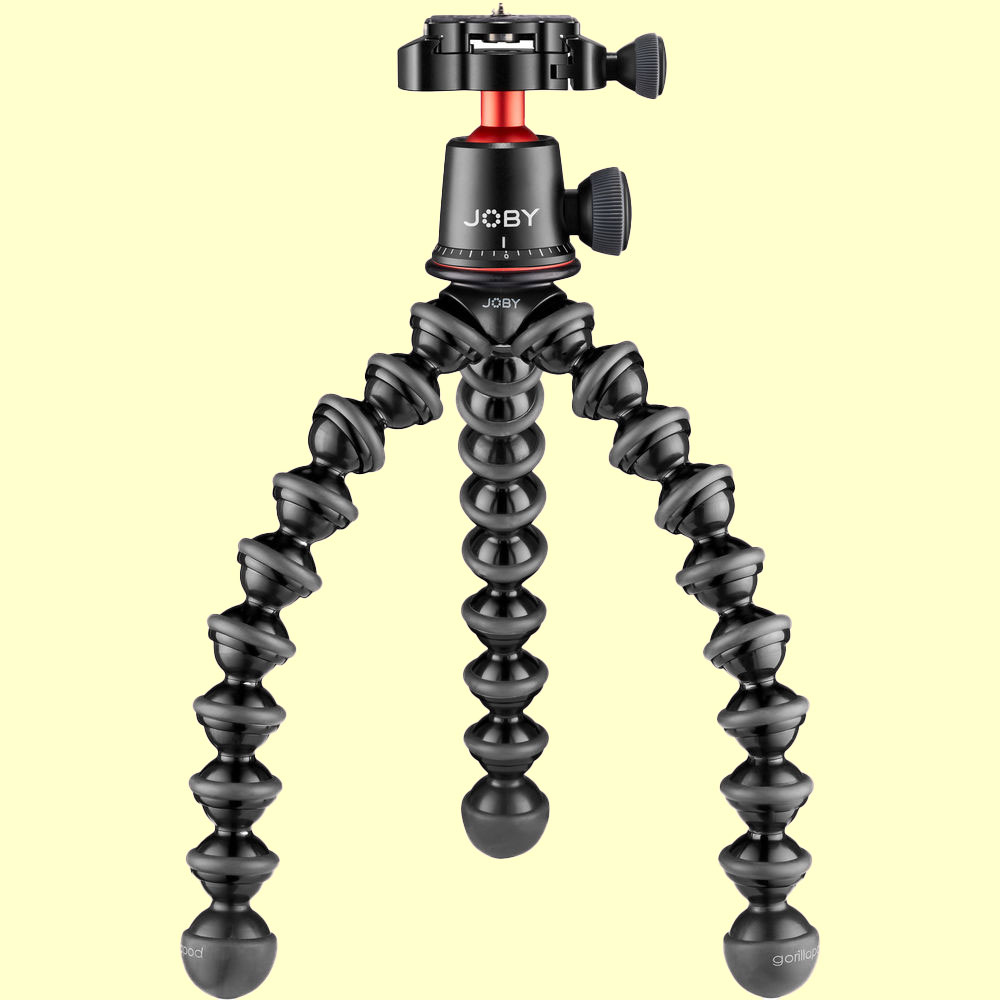
There’s something to be said for carrying a small but sturdy table-top tripod with you all the time, which you can deploy in situations where full-size tripods can’t be used. If you’d like to be able to attach your camera to railings or the branch of a tree, then a bendy-legged Joby GorillaPod could be just what you need. They’re available in several sizes and various kits to suit different needs and scenarios. The GorillaPod 3K Pro unit shown here has a 3kg max load rating so great for most mirrorless cameras and costs $81 / £89.
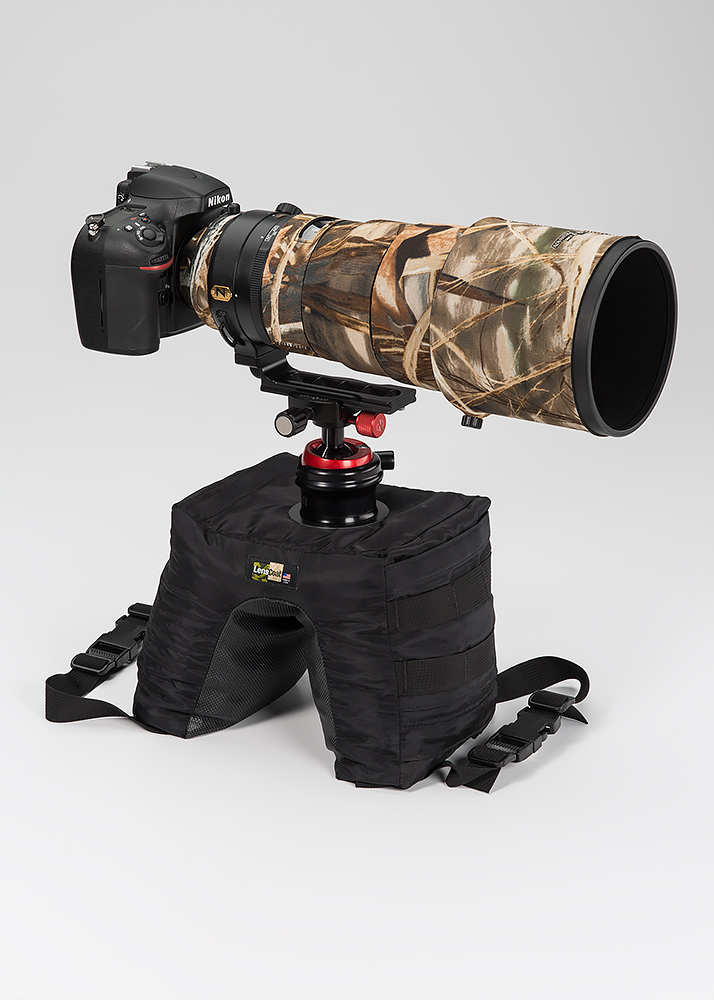
Go anywhere – with beanbags
Some situations and locations simply aren’t amenable to a conventional tripod. For instance, when you’re shooting at ground level or propping your camera on a wall or car door, a beanbag can be indispensable. The LensCoat LensSack Pro Jr bean bag is $94 / £98 and one of the best around and designed to support lenses up to 500mm. A 3/8in mounting screw allows the fitting of a ball or gimbal head and this can be removed for normal bean bag use.
Phone holders
With smartphones becoming ever more accomplished photographic tools, it can be useful to be able to fit them onto a tripod. As they don’t have their own sockets, some sort of clamp is necessary; look for ones that fold flat when they’re not in use. Our favourite is probably the Joby Griptight ONE Micro Stand, which costs $36 / £29, and accepts smartphones 2.2-3.6in. Alternatively, the Manfrotto TwistGrip Univeral Smartphone Clamp is a heavier- duty option that includes a shoe mount for a microphone or LED light, and costs around $52 / £44.
See our guide to phone tripods.
Monopods
Monopods don’t do the same job as tripods; instead they’re great for providing extra support with lenses that are too heavy to shoot handheld for long periods. Again there’s a vast range to choose from, with different weights, heights and rated loads; some also have small tripod feet for extra stability.
Our favourites include the excellent value Vanguard VEO 2S AM-264TR ($80 /£100). For demanding users, the £148 Manfrotto XPRO 5-section carbon-fibre monopod will support large telephotos with ease; it also comes in a kit with tripod feet for $190 / £259.
Arca Swiss grips and L-brackets
Ultimately, the effectiveness of any tripod is only as good as the connection between it and the camera. This explains the current ubiquity of the Arca Swiss pattern dovetail quick-release system – the clamp design locks the camera firmly onto the head. With this popularity has come a range of Arca Swiss base-plates tailor-made for different models of cameras, which often expand the hand grip as an added bonus.
Many also function as L-brackets that allow you to shoot in portrait format with the camera positioned over the top of the head, giving much better stability. Custom aluminium alloy L-brackets are available for almost every camera so just do a web search. Universal-fit L-brackets are also available. These can be particularly useful for landscape photography.
Guide to Tripod heads
Photographic tripod heads come in four main types, along with some specialist options. Here’s a summary of the strengths and uses of each, along with a highlight of some accessories that can help in specific situations.
Ball heads
By far the most popular type of tripod head, these win on light weight and speed of use, but can be difficult to adjust really precisely. The best have an independently lockable panning base, and a friction control to adjust the drag on the ball movement. Sirui’s K-X series heads are particularly fine examples, featuring a well-designed friction control, Arca Swiss-type quick release and multiple bubble levels. Prices range from around $130 /£94 for the smallest Sirui K-10X. Vanguard’s Alta BH range is a great budget alternative, at $71 / £75 for the BH-100 to $83 / £95 for the larger BH-300.
Geared heads
For photographers who demand precise control of composition, perhaps for architectural or macro work, a geared head can be a godsend. Until recently, Manfrotto dominated this sector, aside from some super-expensive options from Arca Swiss. But now Benro has leapfrogged into the lead with its $175 / £169 GD3WH, a relatively lightweight and portable yet precise geared head that incorporates an Arca Swiss-type quick release. Those on a tighter budget should consider the $250 / £179 Manfrotto XPRO 3-Way Geared head, although it’s more plasticky and uses Manfrotto’s RC2 camera plate.

3-way heads
The 3-way, or pan-and-tilt type of head, is almost ubiquitous on cheap aluminium- and-plastic tripods, but gets progressively less popular as prices rise. It has the big advantage of giving independent control over the three axes of camera movement, but the penalty lies in additional size and weight. As a result, 3-way heads are generally best suited for studio use. Having three levers sticking out in different directions also restricts portability, and for this reason we like Manfrotto’s MHXPRO-3W X-PRO 3-way head ($200 / £129) which features field-friendly retractable handles.
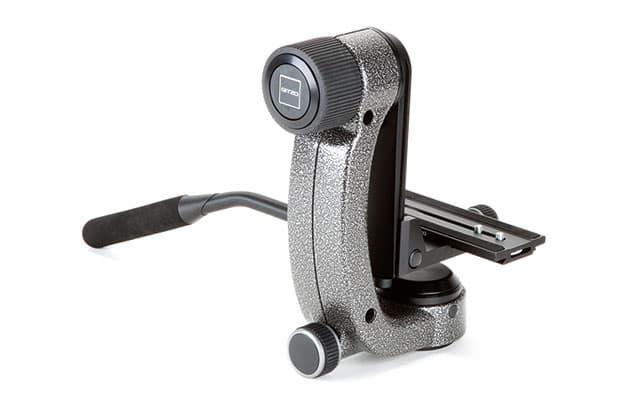
Gimbals
If you try using large telephoto lenses on a tripod, you’ll quickly find that conventional heads aren’t really suitable for holding them securely. This is where gimbal heads come in. By suspending the lens from above, they provide a stable solution with even the heaviest of lenses. Our pick of the class is the Gitzo Fluid Gimbal Head priced at $400 / £429, which combines smooth fluid movement at slow rotation speeds with free movement for faster adjustments. The $374 / £269 Benro GH2 represents a worthy budget option.
Fluid heads – great for video
Fluid heads can also be particularly useful for video work as they normally feature a long handle for panning, with a fluid chamber, and adjustable tension control to help create smoother pans while recording. You may even find some models feature a counterweight. Add this to a video tripod and you should be able to achieve smooth pans with ease.
Panoramic heads
Panoramic heads are specialist heads designed for precise panoramic photos, and can be very heavy and bulky as a result. They give you control of the camera, and let you rotate the camera and lens precisely around the nodal point of the lens, which means you can get vastly improved results shooting panoramic images, compared to a standard tripod head. However, for the casual panoramic photo, they are generally considered overkill.
If a specialist panorama head appeals, check out the Nodal Ninja NN3. With the RD10 rotator, expect to pay in the region of $223 / £283.
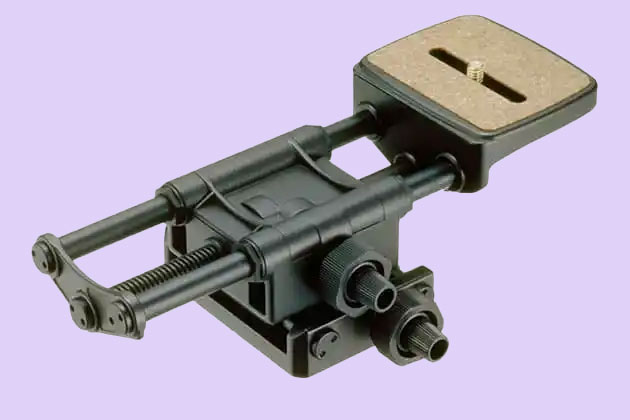
Macro sliders
These aren’t heads as such, but add-on accessories that allow the camera’s position to be adjusted precisely for macro photography, where even sub-millimetre movements can visibly change the composition and focus. The Velbon Super Mag Slider (£219) is quite bulky, but provides smooth and precise adjustment both forwards and backwards for focusing, and side to side for tweaking the image framing. If you can live without the latter, the Manfrotto 454 Micro Positioning Plate ($96 / £119) is a more compact option for macro focus adjustment.
Top tips for tripod use
- Extend the centre column as little as possible for maximum rigidity.
- On uneven ground, adjust the lowest, thinnest leg sections to ensure the tripod is level
- Hang a bag off the centre column hook to help dampen vibrations.
- Make sure all controls are locked down completely tight before shooting.
- Use a remote release to fire the camera’s shutter.
- In portrait format, use an L-bracket to keep the camera directly above the head.
- If you use your tripod in saltwater, give it a good wash to prevent unwanted corrosion.
Understanding tripod specifications
The four obvious headline specifications when comparing tripods are:
- Maximum height
- Folded length
- Weight
- Load capacity
But also check the height without the centre column extended – the taller this is, the more stable the tripod is likely to be. If you’re interested in low-level work, also pay attention to the minimum height, and how much disassembly of the tripod’s centre column is required to get there – split columns are quickest and easiest to use. But note that load ratings should be taken as a very rough guide only; manufacturers determine them in different ways, and they tend to be optimistic.
Main tripod brands to check out:
- Benro
- Cullmann
- Feisol
- Gitzo
- Joby
- Manfrotto
- Sirui
- 3 Legged Thing
- Vanguard
- Velbon
- Wildlife Watching Supplies
Additional tripod accessories
Once you’ve found the right tripod for you, there are a number of different accessories that can help you if needed. Here James Abbott runs through the options.

Special feet for different situations
Every tripod will come with a standard set of rubber feet, but some feature runner feet that twist to reveal small spikes for added grip in certain situations. You can also get feet designed for use on snow and sand, and spikes of varying lengths to make sure your tripod is as stable as possible on softer ground.
Plamp for holding subjects or a reflector
The Wimberley Plamp may have a strange name but this accessory is extremely useful, especially for macro and close-up photographers. The Plamp attaches at one end to a tripod, and the clip at the other can be used to hold a subject (such as a flower) still when shooting. Alternatively, the Plamp can be used to hold up small backgrounds or reflectors to even-out lighting.
Tripod bags
Most camera bags are designed to carry a tripod but if you’re using one that doesn’t, or using a camera insert in an everyday bag, a tripod bag may be useful. These bags are generally designed for specific models, and some tripods are sold with bags included. If your tripod didn’t come with a bag, check the manufacturer’s website to see if one that fits is available.
Article: Andy Westlake, James Abbott, Michael Topham
Check out our picks for the best tripods and best camera phone tripods you can buy. For more advice on how to use a tripod, have a look at our guide to tripods from professional photographers.
- Beginners guide to different camera types.
- Beginners guide to different lens types.
- Beginners guide to using a camera taking photos.
- Beginners guide to Exposure, aperture, shutter, ISO, and metering.
- Understanding white balance settings and colour
- 10 essential cameras accessories for beginners
- Beginners guide to the Art of photography and composition
- Beginners guide to Photoshop Elements and editing photos
- Beginners guide to Portrait Photography
- Beginners guide to Macro Photography
- Beginners guide to Street Photography
- Beginners guide to Landscape Photography
- How to shoot Action and Sports Photography
- How to shoot wildlife photography
- Raw vs JPEG – Pros and cons
- How to create stunning black and white images
- How to photograph events and music
- Pet photography – how to photograph pets
- The ultimate guide to flash photography

